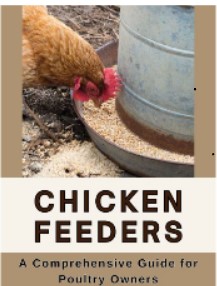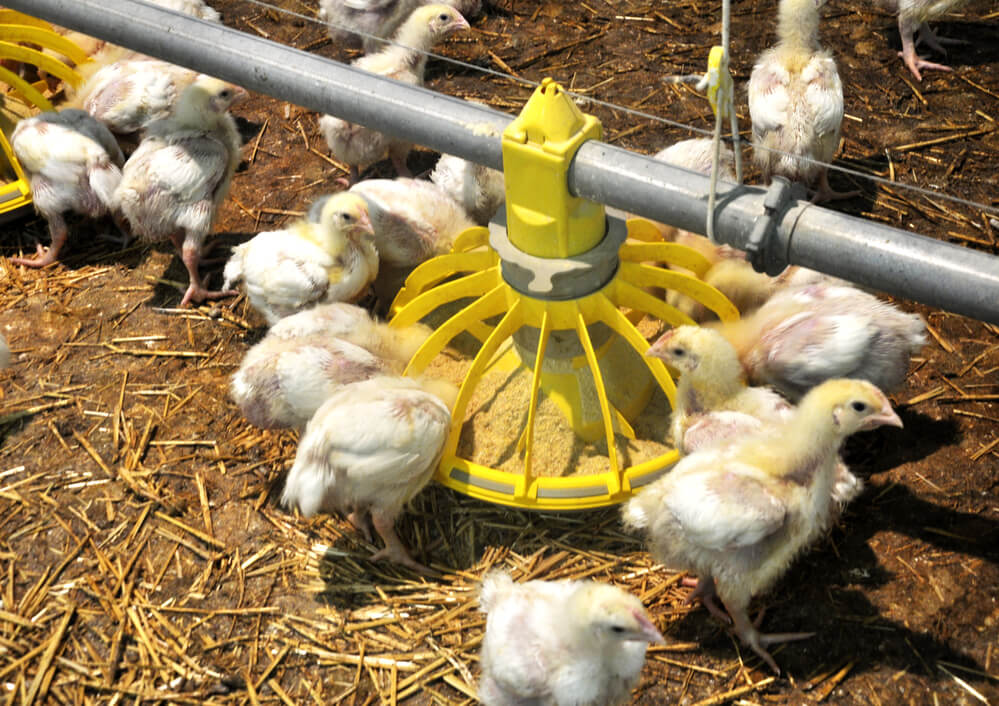Many farmers and backyard enthusiasts that are wanting to learn how to raise chickens find it to be an increasingly popular hobby. A good, reliable chicken feeder is one of the most important tools for managing poultry, as it guarantees that your flock always has easy access to food, and provides no waste or contamination. So in this article, we will see what type of chicken feeder is suitable for you and how to select the best one for your setup.
What Is a Chicken Feeder?
Chicken feeder is a type of container or system for insulting feed to chickens by a specific means. Its purpose is to:
Help provide a source of clean and consistent food.
Minimize waste and spillage.
Prevent feed from picking and the attacks of pests and elements.

Why you Need a Chicken Feeder?
Convenience
With feeders, you don’t need to feed as often … feeders save you time. They make sure your chickens get some food even when you are not around.
Hygiene
A good feeder keeps the feed off of the ground so that contamination from droppings, moisture or pests will not bother it.
Cost Efficiency
Feed waste caused by spillage or spoilage caused by having poor feeders is reduced, and long term savings result.
Healthier Flock
F eding controlled feeding prevents overconsumption and encourages a balanced diet which in turn helps us in having healthy local chickens.
Types of Chicken Feeders
There is no right or wrong answer about which feeder to choose for your flock, budget or environment. Here are the main types:
Manual Chicken Feeders
What Are They?
Feed dispensers for chickens that snack at them.
Best For:
Small flocks or beginners.
Advantages:
Affordable and easy to clean.
No power required, no complicated mechanisms.
Automatic Chicken Feeders

What Are They?
Feeder that release food automatically, like when a chicken’s weight or movement causes food to be released.
Best For:
Larger flocks or busy owners.
Advantages:
Saves time and effort.
Keeps feed clean and dry.
Controls portions that reduces wastage.
Treadle Feeders
What Are They?
Feeders with a platform that steps the feed compartment when they are stepped on by chickens.
Best For:
Pests are a problem with outdoor setups.
Advantages:
Pest-proof design.
Keeps feed dry and clean.
DIY Feeders
What Are They?
Homemade, or recycled, buckets, pipes, or something in between to make mobile feeders.
Best For:
Poultry keepers with a tight budget.
Advantages:
For specific needs it is customizable.
Environmental friendly and cost effective
Top Characteristics to Choose the Right Chicken Feeder
Capacity
Choose the feeder size to keep your flock full without refilling too often.
Small flocks (up to 10 chickens): 10–15 lbs capacity.
Large flocks: 30+ lbs capacity.
Material
Outdoor condition is being compatible with durable materials such as plastic, metal or galvanized steel.
Avoid plastic with a low quality that can crack or degrade over time.
Pest Resistance
That means selecting, for instance, pest proof feeders to keep rodents, wild birds or insects out of your feed.
Weather Protection
Check to see that the feeder stays dry and doesn’t let feed get wet when it rains or snows.
Portability
Feeders that are easier to move around for cleaning or repositioning are easier to move around.
The 10 Best Chicken Feeders (2024)
Harris Farms Hanging Feeder
Features:
Durable plastic construction.
Can be hung to prevent tipping.
Best For:
Small to medium-sized flocks.
Automatic Chicken Feeder Grandpa’s Feeders
Features:
Pest proof feeding with treadle mechanism.
Holds up to 20 lbs of feed.
Best For:
Large outdoor flocks.
DIY PVC Pipe Feeder
Features:
Easy and affordable to assemble.
Vertical design saves space.
Best For:
Budget-friendly setups.
Maintaining your Chicken Feeder
Proper maintenance ensures your feeder lasts longer and keeps your flock healthy:
Clean Regularly
To remove dirt and bacteria, wash the feeder with warm soapy water.
Let is dry completely and rinse thoroughly before refilling.
Inspect for Damage
Look for cracks, rust or worn out parts that can damage your chickens or give you spoiled feed.
Store Feed Properly
Cover excess feed in airtight containers to stay fresh and pest free.
Adjust Placement
Put the place feeders in shadow area or so that not overheating or spoilage.
Raise feeders to minimize the chance of contamination from droppings.
DIY Chicken Feeder Ideas
If you’re handy and looking to save money, here are a few DIY feeder ideas:
Bucket Feeder
Materials:
A plastic bucket with a lid.
PVC pipes or tubing.
Steps:
Make some cut holes near the bottom of the bucket.
Angle PVC pipes downwards and attach them.
Cover with the lid and fill the bucket with feed.
PVC Pipe Feeder
Materials:
PVC pipes and elbows.
Steps:
Measure the pipe that you want cut and then cut to that desired length.
Make an opening at the bottom and attach an elbow.
It can be mounted vertically or horizontally.
Tips for Using Chicken Feeders Without Proving Yourself Wrong
Overfilling the Feeder
Wastage causes and attracts pests.
Placing the Feeder Too Low
Leads to more contamination of the stool (droppings or dirt).
Ignoring Weather Protection
Feed exposed to air can become damp, and may become moldy.
Not Cleaning Regularly
This can get your chickens dirty and can be damaging to their health.
Good Chicken Feeder Benefits
A good feeder not only saved you some time and money but also helps in maintaining the health and general productivity of your flock. When chickens have access to clean feed on a consistent basis they are getting healthier and laying more eggs and less stressed.
Conclusion
The choice of a good chicken feeder is an expanded part of poultry care. If you’re managing a small backyard flock, a large commercial operation, or just about anything in between, the right feeder can mean the difference between efficient flock health and wasted feed. Whether you want manual feeders or pest proof treadle designs, there’s a style for every budget.
Factor in things like the chickens’ capacity, material and pest resistance to know your chickens are well fed and happy. See what it looks like to explore options, or take a hands on DIY approach in order to save on costs.
FAQs
What is the best chicken feeder?
For large flocks automatic feeders are preferred, while for smaller setups manual feeders are best.
When should I refill a chicken feeder?
On the lower end of the capacity range (flock sizes) and depending on feeder capacity, you may see refilling every 2–3 days.
Can I make a chicken feeder?
DIY buckets or PVC pipe feeders are cheap and customizable, but yes.
What can I do to keep pests from coming to chicken feeders?
Elevate feeders or use treadle feeders to prevent those pests from getting to the feed.
How big of a feeder do I need for a 10 chicken flock?
A flock of 10 is easily feed by a feeder with a 10-15 lbs capacity.
